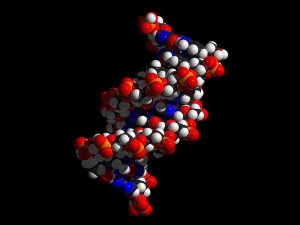Those of you  who live in the UK will by now be unable to move without seeing some reference to the looming election. This year’s ballot results are thought to be amongst the most contentious in recent history. The hot-button issues on the agenda include the NHS, immigration and taxes. But what policies do each of the parties contending for seats in Parliament have regarding science and science funding?
who live in the UK will by now be unable to move without seeing some reference to the looming election. This year’s ballot results are thought to be amongst the most contentious in recent history. The hot-button issues on the agenda include the NHS, immigration and taxes. But what policies do each of the parties contending for seats in Parliament have regarding science and science funding?
Well, if you look at the key pledges in their manifestos, the answer is “not a lot”. The BBC has listed the top-line issues from the manifestos for many of the parties, including the five biggest UK-wide parties – Conservative, Labour, the Liberal Democrats, UKIP and the Green Party. A quick search of any of these top-line topics does not pick out science or research. Whilst some parties may address the issue of science and science funding in their full manifesto, none of them appear to be campaigning on this issue.
 The closest thing any party regularly speaks about with regards to scientific policy is the environment. This BBC breakdown shows what each of the parties pledge with regards to the environment, with a particular focus on climate change. The parties also have stances on education, although many of the key points focus on primary and secondary school education alongside university issues such as tuition fees. However, they don’t tend to look further into postgraduate education such as master’s and PhD degrees. Only UKIP and the Welsh party Plaid Cymru make any reference to Science, Technology, Engineering and Maths (STEM) degrees in these at-a-glance manifestos. UKIP pledge to scrap tuition fees for those taking a STEM degree as long as they stay in the UK and pay UK taxes for five years after graduation. Plaid Cymru also offer support to STEM students who remain in Wales to study.
The closest thing any party regularly speaks about with regards to scientific policy is the environment. This BBC breakdown shows what each of the parties pledge with regards to the environment, with a particular focus on climate change. The parties also have stances on education, although many of the key points focus on primary and secondary school education alongside university issues such as tuition fees. However, they don’t tend to look further into postgraduate education such as master’s and PhD degrees. Only UKIP and the Welsh party Plaid Cymru make any reference to Science, Technology, Engineering and Maths (STEM) degrees in these at-a-glance manifestos. UKIP pledge to scrap tuition fees for those taking a STEM degree as long as they stay in the UK and pay UK taxes for five years after graduation. Plaid Cymru also offer support to STEM students who remain in Wales to study.
But does it matter that science is not included as part of the key election pledges? Surely science funding and postgraduate research is not as important to the country as the NHS, national security and welfare? Maybe not, but there are some arguments as to why it should be given a little bit more focus.
 Firstly, a lot of science undertaken in this country is funded directly by the government. According to Research Councils UK, the combined spend of each of the government-funded research councils was about £2.8 bn on research in 2013-2014. Most of the remaining research expenditure comes from charities. Indeed, data released by the Association of Medical Research Charities in 2013 shows that the government spend on medical research was about £1.7 bn (split between the Medical Research Council and National Institutes for Health Research) while medical research charities spent nearly £1.3 bn in the same period.
Firstly, a lot of science undertaken in this country is funded directly by the government. According to Research Councils UK, the combined spend of each of the government-funded research councils was about £2.8 bn on research in 2013-2014. Most of the remaining research expenditure comes from charities. Indeed, data released by the Association of Medical Research Charities in 2013 shows that the government spend on medical research was about £1.7 bn (split between the Medical Research Council and National Institutes for Health Research) while medical research charities spent nearly £1.3 bn in the same period.
Also, many of the issues at the heart of 2015’s manifestos are in some way related to science and research. The most obvious of these being healthcare, as medical research is responsible for finding causes and cures for a huge number of different conditions. This includes some topics that are very high on many party agendas, including cancer, dementia and mental health. Other issues include climate change, specifically policies on the controversial topic of alternative energy sources, with opinions varying wildly from different parties regarding fracking and nuclear power. Animal welfare is also high on several party manifestos, most notably the Green Party, who are aiming for a reduction of the use of animals in research.
 Some of the parties’ other policies could also have an indirect impact on science research and education. For example, UKIP’s plan to remove tuition fees for STEM graduates who stay in the country for five years after their degree ends may impact on people who intend on doing further study abroad. Talented graduates seeking further training abroad is not necessarily a bad thing; they will often gain expertise in new techniques, which they can then apply to research in the UK when they return. The Green Party’s policies on Genetically Modified Organisms (GMOs) and animal welfare would have a large impact on the use of these techniques in research. There have also been discussions about what would happen to science and research in an independent Scotland, which is a key aim of the Scottish National Party (SNP).
Some of the parties’ other policies could also have an indirect impact on science research and education. For example, UKIP’s plan to remove tuition fees for STEM graduates who stay in the country for five years after their degree ends may impact on people who intend on doing further study abroad. Talented graduates seeking further training abroad is not necessarily a bad thing; they will often gain expertise in new techniques, which they can then apply to research in the UK when they return. The Green Party’s policies on Genetically Modified Organisms (GMOs) and animal welfare would have a large impact on the use of these techniques in research. There have also been discussions about what would happen to science and research in an independent Scotland, which is a key aim of the Scottish National Party (SNP).
The science policy group ‘the Campaign for Science and Engineering (CaSE)’ wrote to several party leaders, to outline various policies regarding science in the UK. Amongst their requests were “[a] boost in government and business investment in UK research” and “[ensuring] that the UK has a diverse pool of talented people … to drive our future scientific success”. Whilst each of the leaders replied to the letter, few appear to have translated the letter’s messages into their manifestos, at least not as a high priority. An exception is the Green Party, who directly reference a pledge to “double public spending on research in the next ten years”, although this does have caveats, as discussed above. An analysis by CaSE suggests that UK government expenditure on Research and Development as a proportion of GDP has been decreasing since 2003 and that this is causing the UK to lag behind other countries with regards to scientific output.
It would be foolish to expect that science funding and policy would be the key part of any manifesto for a general election. However, it is slightly disheartening to see that none of the major parties are focusing strongly on something that is at the heart of so many of their policies. Whoever ends up in government in May, the hope is that they continue to recognise the strength of scientific research in the UK and allow for it to continue and flourish.
For a look at the key pledges in the manifestos of each party, please see the BBC website.
Post by: Louise Walker
Disclosure statement: I am employed by a charity that funds medical research. The views represented here are my own and not that of my employer.

































